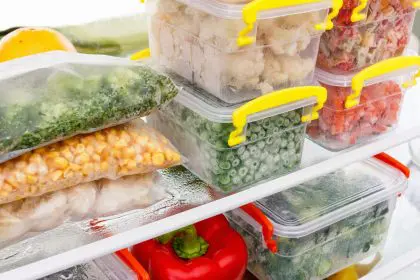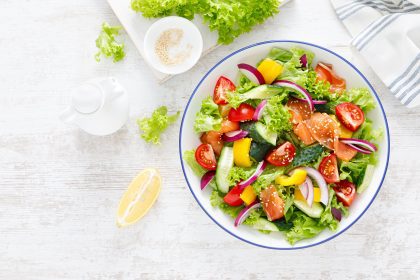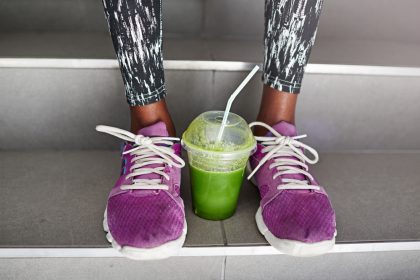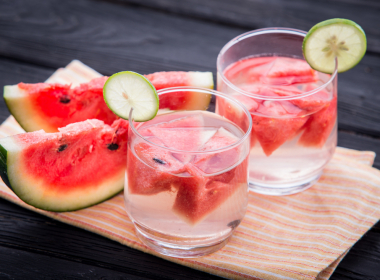Vegetables form the cornerstone of a nutritious diet, providing essential vitamins, minerals, antioxidants, and fiber. However, the way we prepare these plant foods can significantly impact their nutritional value. While raw consumption has long been touted as optimal for nutrient preservation, certain cooking methods can actually enhance the bioavailability of some nutrients while minimizing losses of others. Understanding the science behind vegetable preparation can help home cooks and health enthusiasts make informed decisions about how to maximize the nutritional benefits of their produce.
The nutrient preservation challenge
Vegetables contain a complex array of water-soluble vitamins (like B vitamins and vitamin C), fat-soluble vitamins (A, D, E, and K), minerals, and phytonutrients. Each of these compounds responds differently to heat, water, and oxygen exposure. Water-soluble vitamins are particularly vulnerable to cooking losses, as they can leach into cooking water and degrade when exposed to high temperatures for extended periods. Fat-soluble vitamins tend to be more heat-stable but can still diminish with prolonged cooking.
The goals of optimal vegetable preparation include minimizing nutrient losses due to heat degradation, preventing water-soluble vitamin leaching, limiting oxidation of sensitive compounds, and enhancing the bioavailability of certain nutrients that are better absorbed after cooking. Finding this balance requires understanding which cooking methods best accomplish these objectives.
1. Steaming: gentle heat with minimal nutrient loss
Steaming stands out as one of the most effective cooking methods for preserving nutrients in vegetables. This technique involves suspending food above simmering water, allowing it to cook in the rising steam rather than direct contact with water. The gentle, moist heat softens vegetable fibers without submerging them in water where nutrients could leach out.
Several key advantages make steaming particularly effective for nutrient retention. First, steaming typically requires minimal cooking time compared to boiling or baking, reducing the duration of heat exposure that can degrade sensitive vitamins. Research indicates that steamed broccoli retains up to 80% of its vitamin C content, compared to just 50% when boiled.
Steaming also preserves water-soluble B vitamins that would otherwise dissolve into cooking water. For vegetables rich in these nutrients—such as spinach, asparagus, and Brussels sprouts—the difference in nutrient preservation between steaming and boiling can be substantial. Studies show that steamed spinach may retain three times more folate than when boiled.
Additionally, the gentle nature of steam heat helps preserve the delicate structure of phytochemicals like glucosinolates in cruciferous vegetables (broccoli, cauliflower, cabbage). These compounds are responsible for many of the cancer-fighting properties of these foods and are easily lost with more aggressive cooking methods.
The ideal steaming approach involves bringing water to a boil before adding vegetables to the steamer basket, which minimizes the time vegetables are exposed to heat. Keeping steaming times brief—just until vegetables reach the desired tenderness—further protects heat-sensitive nutrients.
2. Microwave cooking: quick, efficient nutrient preservation
Despite lingering misconceptions about microwave cooking, this method actually ranks among the best for nutrient preservation in vegetables. Microwaves cook food by causing water molecules to vibrate, generating heat directly within the food rather than transferring it from an external source. This mechanism offers several advantages for preserving vegetable nutrients.
First, microwave cooking typically requires very little added water—just enough to create steam in the cooking vessel. This minimal water contact reduces leaching of water-soluble nutrients. When vegetables are microwaved in their own juices or with just a tablespoon or two of water, they retain significantly more water-soluble vitamins than when boiled.
The rapid cooking time of microwave preparation also contributes to superior nutrient retention. Most vegetables can be perfectly cooked in the microwave in just 2-4 minutes, minimizing the duration of heat exposure that can degrade vitamins. Research shows that microwaved broccoli can retain up to 90% of its vitamin C, comparable to or better than steaming.
Microwave cooking also preserves colorful pigments in vegetables better than many other methods. The vibrant greens of spinach and broccoli, the deep oranges of carrots, and the rich reds of bell peppers—all indicators of beneficial phytonutrients—remain more intact with microwave cooking compared to longer stovetop methods.
For optimal results, vegetables should be cut into uniform pieces to ensure even cooking, placed in a microwave-safe container with minimal water, and covered (but not sealed airtight) to create steam. Stirring halfway through cooking promotes even heating and preventing some areas from overcooking while others remain raw.
3. Stir-frying: quick cooking with healthy fats
Stir-frying represents an excellent compromise between raw and heavily cooked vegetables, offering nutrient preservation while enhancing the absorption of certain compounds. This method involves cooking small, uniform pieces of vegetables quickly over high heat with a small amount of oil, keeping them in constant motion.
The rapid cooking time of stir-frying—typically just 2-5 minutes total—minimizes the duration of heat exposure, helping preserve heat-sensitive vitamins like vitamin C and many B vitamins. The brief cooking duration allows vegetables to become tender while retaining some crispness, indicating minimal breakdown of cellular structures that contain nutrients.
The addition of a small amount of healthy oil during stir-frying provides a unique advantage not offered by water-based cooking methods: enhanced absorption of fat-soluble nutrients. Carotenoids (like beta-carotene in carrots and lutein in leafy greens), vitamin E, and vitamin K require dietary fat for optimal absorption. The oil used in stir-frying facilitates the absorption of these nutrients, potentially making them more bioavailable than in raw or water-cooked vegetables.
Research demonstrates that stir-fried vegetables can contain more bioavailable antioxidants compared to their raw counterparts. For example, lycopene in tomatoes and beta-carotene in carrots become more absorbable after brief cooking with oil, as the heat and fat help release these compounds from the plant cell walls.
For best results, vegetables should be cut into uniform, relatively small pieces to ensure quick, even cooking. A well-heated wok or heavy pan allows for quick searing that maintains crispness while developing flavor. Using heart-healthy oils like olive oil or avocado oil adds nutritional benefits beyond just aiding nutrient absorption.
4. Pressure cooking: nutrient retention under pressure
Pressure cooking has experienced a renaissance in recent years, particularly with the popularity of electric pressure cookers. This method cooks food using steam pressure in a sealed environment, raising the boiling point of water and significantly reducing cooking time compared to conventional methods.
The reduced cooking duration of pressure cooking helps preserve heat-sensitive nutrients that would degrade during longer cooking processes. Many vegetables that might require 20-30 minutes of conventional boiling can be perfectly cooked in a pressure cooker in just 1-3 minutes at pressure.
Additionally, the sealed environment of a pressure cooker prevents water-soluble vitamins from being lost to evaporation. While some nutrients do leach into the cooking liquid, this liquid remains in contact with the vegetables and can be consumed along with them (as in soups or stews), minimizing overall nutrient loss.
Pressure cooking shows particular benefits for certain vegetables and legumes that typically require longer cooking times. For example, pressure-cooked beans retain significantly more folate and other B vitamins compared to traditionally boiled beans. Root vegetables like beets, which might lose nutrients during long roasting or boiling times, can be quickly cooked in a pressure cooker with minimal nutrient loss.
The high temperature achieved in pressure cooking (around 250°F/121°C, compared to boiling at 212°F/100°C) actually offers additional benefits for certain vegetables. The higher heat can more effectively deactivate antinutrients like phytates and oxalates in foods such as spinach, making their minerals more bioavailable despite the slight decrease in vitamin content.
For optimal nutrient preservation with pressure cooking, vegetables should be cooked for the minimum time needed to reach desired tenderness. Using the natural release method rather than quick release allows vegetables to finish cooking gently as pressure subsides, preventing overcooking while maximizing nutrient retention.
Comparing cooking methods across different nutrients
The effectiveness of each cooking method varies depending on which specific nutrients are being considered. Water-soluble vitamins respond differently than fat-soluble ones, and minerals have their own distinct properties when exposed to heat and water.
For vitamin C preservation, steaming and microwaving consistently outperform other methods across various vegetables. Broccoli, bell peppers, and Brussels sprouts—all high in vitamin C—retain significantly more of this vitamin when steamed or microwaved compared to boiling or pressure cooking.
For carotenoid compounds like beta-carotene and lycopene, brief stir-frying often yields the best bioavailability. The combination of light cooking to break down cell walls and the presence of fat for absorption creates ideal conditions for these fat-soluble nutrients. Carrots, tomatoes, and orange winter squash actually provide more bioavailable carotenoids after light cooking with oil than when consumed raw.
Folate and other B vitamins are generally best preserved through steaming or microwaving with minimal water. Leafy greens and asparagus, both excellent sources of folate, maintain higher levels of this vitamin when prepared using these methods rather than boiling.
Minerals like potassium, magnesium, and calcium are generally more stable during cooking than vitamins, but they can still leach into cooking water. Steaming, microwaving, and stir-frying all help retain these important minerals better than methods that use large volumes of water.
Practical applications for everyday cooking
Applying these nutrient-preserving cooking methods in daily meal preparation can significantly impact the nutritional quality of vegetables without requiring extensive time or special equipment.
For quick weeknight side dishes, microwaving vegetables like broccoli, cauliflower, or green beans provides maximum nutrition with minimal effort. Simply placing washed, cut vegetables in a microwave-safe container with a tablespoon of water and covering with a vented lid creates perfect steaming conditions in minutes.
For meal components with more flavor development, stir-frying offers an excellent balance of nutrition and taste. Bell peppers, snow peas, bok choy, and other quick-cooking vegetables can be transformed into delicious sides or main dishes while retaining most of their nutrients.
Pressure cooking shows particular value for weekly meal preparation, allowing nutrient-dense root vegetables and legumes to be quickly prepared in batches. Beets, carrots, potatoes, and dried beans cook in a fraction of their normal time while retaining more nutrients than traditional long-cooking methods.
For the most delicate vegetables like leafy greens, traditional steaming remains one of the best options. A simple steamer basket in a covered pot provides the gentle cooking environment that best preserves the nutrients in spinach, kale, and other nutritional powerhouses.
By matching cooking methods to specific vegetables and desired outcomes, home cooks can significantly boost the nutritional value of their meals without sacrificing convenience or flavor. The modest effort required to implement these evidence-based cooking techniques yields substantial benefits in the nutritional quality of vegetable-rich diets.


















